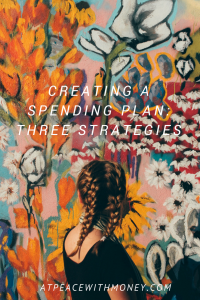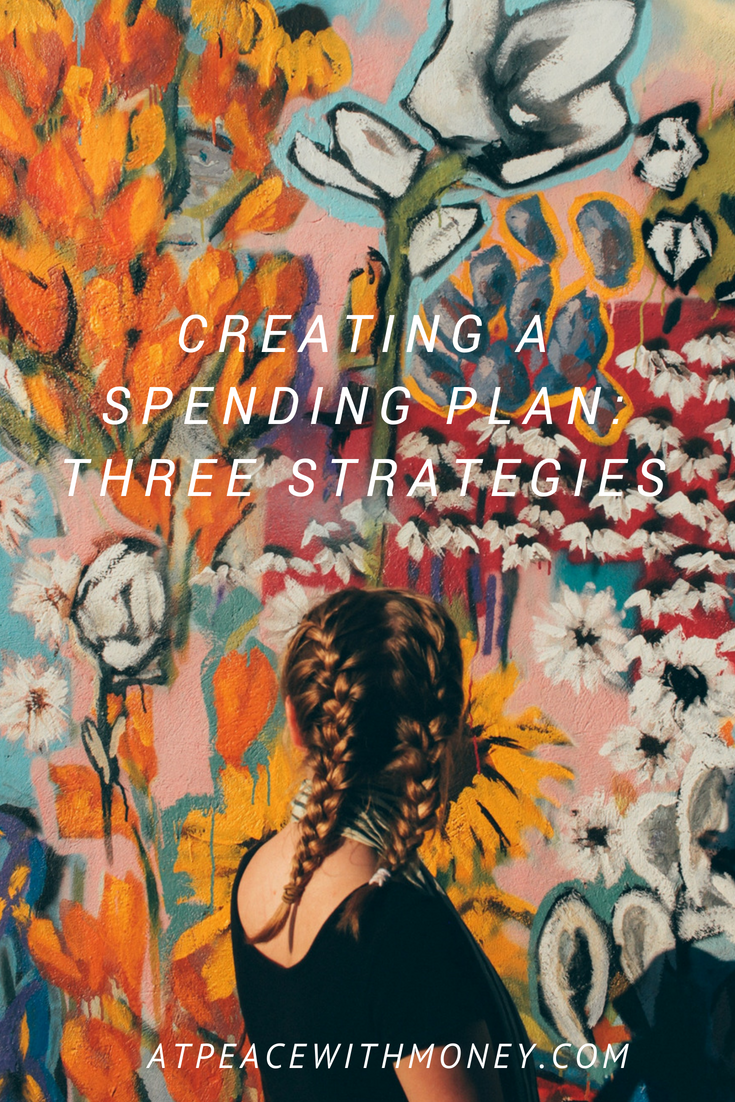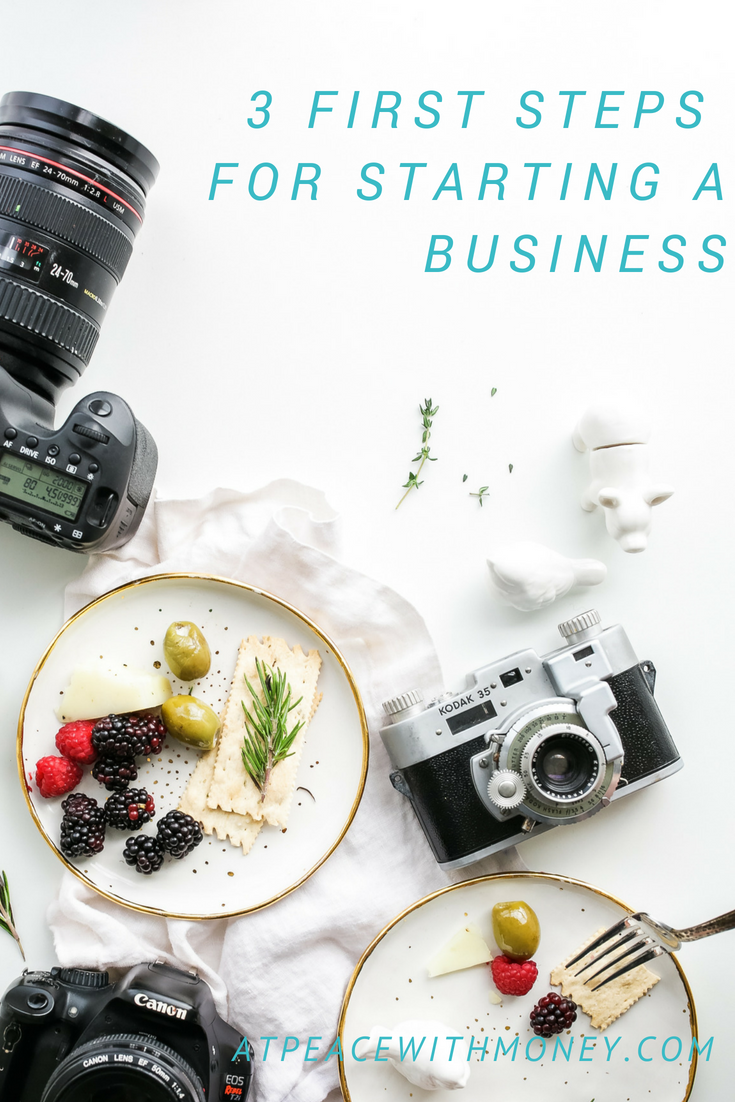Young and Thrifty: Creating a Spending Plan

Creating a spending plan, also sometimes known as a budget, can be a very important tool for getting a handle on your finances no matter where you are in life. In my last Young and Thrifty post, we briefly touched on budgeting as a way to encourage saving habits. Today, I want to look more closely at 3 different types of spending plans. Maybe you’ll find one that works for you! But first, the budgeting basics:
Analyze Your Expenses
The first step to creating almost any spending plan is to analyze your expenses. Figure out what your fixed expenses are, like rent or mortgage payments, transportation costs, food, etc. These types of expenses are things you really need that tend to cost the same amount every month. After you’ve confirmed what your fixed expenses are, you can analyze the rest of your spending habits and determine which of your expenses are flexible, and not as necessary as your fixed necessities.
Once you’ve evaluated your finances in this way, you can start to take charge of your spending using various strategies.
Categories
The most common budgeting strategy is to divide your expenses into specific categories and assigning designated not to exceed amounts for each category. For example: “Food, $200/month, gas, $150/month, etc.” Doing this can help you establish your monthly living expenses and also help you understand how much you spend on each category. If you wish to cut down on your spending in a particular area, this may be a useful strategy for you.
Set Amount for Flexible Expenses
Another strategy that is helpful when you’re really focused on saving is setting aside a set amount of money for all expenses that lie outside of your fixed necessities. When my oldest daughter was setting a budget while saving for her road trip, she set aside $100 a month for all expenses that weren’t fixed necessities. This might be tight for some, but setting an amount in this way is a very simple budgeting tactic that can encourage you to make your spending more intentional.
Rewards
A third tactic that can help you create a spending plan you’ll stick to is to set aside rewards for yourself. For example, if you have $500 to spend on a certain monthly expense, and you manage to only use $480, you can use that extra $20 to reward yourself. This can be applied to your overall monthly expenses or within certain categories. One of my daughters has found this strategy very motivating and usually ends up using her reward money on ice cream.
Resources
There are two digital resources I can recommend for anyone looking to create a spending plan. Mint and You Need A Budget are both digital budgeting software systems that will help you set up and track your monthly budget. From my personal experience, I enjoy Mint, and my family uses their free version. Amber Dugger really appreciates YNAB and uses it with her clients.
Though this article mentions only a few strategies, budgeting and spending plans can be as simple or complex as you need them to be. I encourage you to do more research if you’re interested. I recommend this article from Practical Money Skills and this podcast from Jen Hemphill as two helpful resources. In a later post, I will be putting together a list of some of my favorite resources for financial self-education.
I hope you find these spending strategies useful. Stay thrifty!
☮
Angela
Images:Camille Orgel, Unknown






 While you’re nailing down the banking details of your new business, make sure you also create a money system for yourself. Have a plan to pay off your expenses and also pay yourself. My recommendation, of course, is Profit First, which
While you’re nailing down the banking details of your new business, make sure you also create a money system for yourself. Have a plan to pay off your expenses and also pay yourself. My recommendation, of course, is Profit First, which 

 Recently I’ve received some questions about financial advice for young people. I think the most important piece of advice I can give is this: save your money. It’s simple, but it can be difficult to get in the saving habit. That’s why I recommend developing
Recently I’ve received some questions about financial advice for young people. I think the most important piece of advice I can give is this: save your money. It’s simple, but it can be difficult to get in the saving habit. That’s why I recommend developing  Saving is the best piece of financial advice I can give to young people. Getting in the habit of saving your money opens up a lot of choices, something that’s important and helpful in any young person’s life!
Saving is the best piece of financial advice I can give to young people. Getting in the habit of saving your money opens up a lot of choices, something that’s important and helpful in any young person’s life!
 Recognizing this may mean we need to reexamine our approach with expenses in general. When making a purchase, it’s important to a
Recognizing this may mean we need to reexamine our approach with expenses in general. When making a purchase, it’s important to a

 Your goal is to avoid that, and focus in on your needs and financial priorities. You do not want to be that person who is excited about their new car for the first 6 months– that is, until you realize you don’t have funds for that once-in-a-lifetime vacation. My sister realized her most important goals are to fund retirement and to keep her work schedule flexible. Keeping those life goals in mind helped her reach a decision she felt good about. Maintaining a sense of
Your goal is to avoid that, and focus in on your needs and financial priorities. You do not want to be that person who is excited about their new car for the first 6 months– that is, until you realize you don’t have funds for that once-in-a-lifetime vacation. My sister realized her most important goals are to fund retirement and to keep her work schedule flexible. Keeping those life goals in mind helped her reach a decision she felt good about. Maintaining a sense of